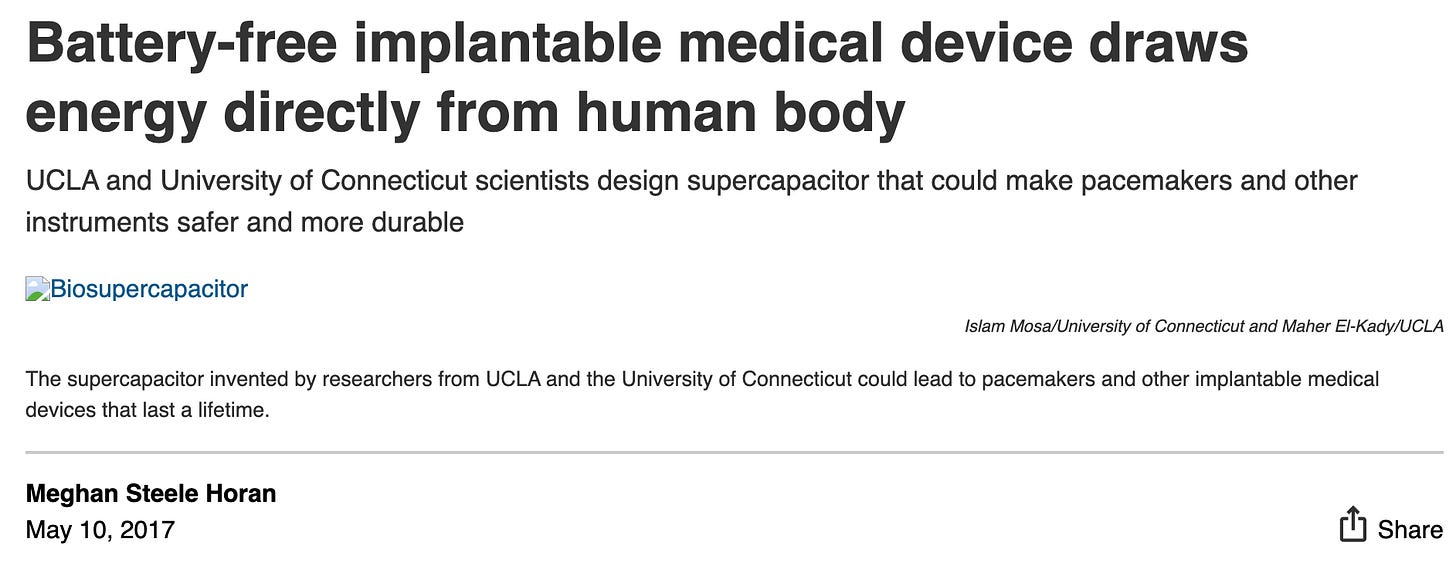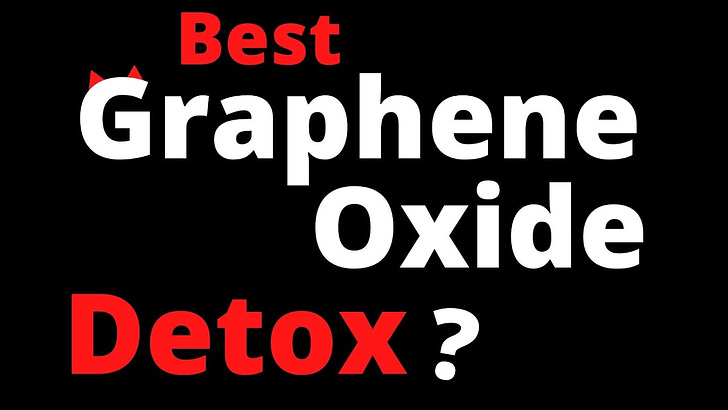I’m going to start with the hopeful part. There are apparently ways to detox from graphene oxide.
So why might we need to detox graphene oxide?
Because graphene is the next big thing and it will soon be in just about everything if we allow for it. Also, graphene is the gateway technology to transhumanism.
According to Science.org:
“Since its unveiling, billions of dollars of R&D funding have flowed to graphene, in a global race to exploit its peerless properties. It is better at carrying electricity than any metal, a superb heat conductor, and hundreds of times stronger than steel—selling points trumpeted in the marketing materials of universities and companies alike.”
Graphene will inevitably be marketed to you as convenience, medical advancement and climate change solution… a solution to EVERYTHING in much the same way that plastic once was. And just like plastic it is becoming an integral part of our lives BEFORE we have any real understanding of its impact. Billions of dollars are now being invested to accelerate industry acceptance of new graphene technologies.
With a new business model in place, industry can finally acknowledge that the chemicals, bleaches, plastics and perfumes used in conventional products are unhealthy and bad for the environment and need to be replaced and we’ll likely see a loud call for “better solutions.”
Enter graphene.
If you haven’t already, you will soon see stories about its extraordinary electronic properties, electron transport capabilities, conductivity, sensor capacity, ultra lightweight properties, amazing flexibility and ecofriendliness.
From a 2022 Nature article:
Wearable bioelectronics is an emerging field of science that revolves around the interface of physics1, electronics2, material science3, chemistry4, medicine5, and engineering. The development of the field has already contributed to general healthcare6, sport medicine7, chronic pulmonary monitoring8, diagnosis of heart and cardiovascular disorders9, diabetes6, cystic fibrosis10, etc. … Reducing the complexity of biomedical tools, making them easily accessible and ultimately wearable, helps to develop an ambulatory health-monitoring network. Moreover, day-to-day health monitoring in asymptomatic subjects in a long-term systematic study will help gather big data that can be used to further build disease prediction algorithms14,15. (emphasis mine)
Right here is where to should be stopping to consider the unintended (or perhaps quietly intended) impacts of graphene technology. But, once again, the industry has bypassed that. And the FDA’s Institutional Review Board Waiver or Alteration of Informed Consent for Minimal Risk Clinical Investigations has created a convenient loophole around our informed consent.
The final rule permits an institutional review board (IRB) to waive or alter certain informed consent elements or to waive the requirement to obtain informed consent, under limited conditions, for certain FDA-regulated minimal risk clinical investigations.
So away we go.
Graphene is being added to concrete to make it stronger, to tarmac in roads.
Talga Resources from Australia say they managed to mix enough graphene into concrete to make it conducive, meaning it could build roads able to charge an electric car while driving. Their concept is not entirely new but their foray into global markets is.

Bill and Melinda Gates have already invested in ultrathin graphene condoms. Graphene-enhanced sanitary products are being touted as “healthy and safe.”
The technology is being introduce into vaccines, masks, dental composites/implants, wearable tattoos, clothing, bike helmets/tires, asphalt, concrete, earphones, hair dye, paint, sports equipment, batteries, solar panels, electric car batteries, water filters, body sensors and ink.
Graphene is also being promoted to you as part of promising treatments for conditions like diabetes, Parkinson's and osteoarthritis and diagnostic technology for cancers…
But there’s alarmingly limited discussion about the potential health impacts of the highly conductive environment this technology will could create. And once inside you, the technology enables access to your biometric data.
And there’s a particular interest in getting into our brains:

INBRAIN’s neural platform technology enables ultra-high signal resolution at levels never seen before, and uses machine learning software that decodes therapy-specific biomarkers to deliver highly focused, adaptive neuroelectronic therapy that re-balances pathological neural networks.
“Breakthrough device designation from the FDA signifies the potential of the INBRAIN neural platform to further improve the lives of patients with Parkinson’s disease,” said INBRAIN Neuroelectronics Clinical Affairs Head Dan Gnansia.
As an interactive, conductive platform that is responsive to 5G, graphene technology renders, you (and your brain) vulnerable to its influence. This should give us all pause.
(How would magnets… or iron levels interact with graphene in our blood?)
This X post is a compilation of links that show how your body can be used as a transmission antenna.
And here’s an article on how graphene can also be used to harvest electrical power from the human body.

The new biosupercapacitor comprises a carbon nanomaterial called graphene layered with modified human proteins as an electrode, a conductor through which electricity from the energy harvester can enter or leave. The new platform could eventually also be used to develop next-generation implantable devices to speed up bone growth, promote healing or stimulate the brain, said Kaner, who also is a member of UCLA’s California NanoSystems Institute.
(Or it could put us in The Matrix)
The research was supported by the National Institute of Health’s National Institute of Biomedical Imaging and Bioengineering, the NIH’s National Institute of Environmental Health Sciences, and a National Science Foundation EAGER grant.
Graphene Toxicity
But unless you research, you’re not likely to hear much about graphene toxicity and all of the ways this technology can be used against you until after it’s in your walls, your roads, your bike helmet, your car, and your vital organs. Graphene has been shown to cause oxidative stress, DNA damage, inflammatory response, apoptosis, autophagy, and necrosis. Graphene nanoparticles can bypass the blood-air barrier, blood-testis barrier, blood-brain barrier, and blood-placenta barrier and accumulate in the lung, liver, and spleen leading to acute and chronic issues.
Masks that contained graphene were recalled because some graphene nanomaterials can be inhaled and and deposited in the respiratory tract and into the lungs where they can cause granulomas, lung fibrosis and other adverse health effects.
These findings indicate that prolonged exposure to GO produces a time window (during the 30 days of treatment set for this study) for which GO-mediated autophagy inhibition along with inflammation may potentially increase the susceptibility of exposed humans to pulmonary infections and/or lung diseases.
Has Graphene evaded informed consent?
Those of us who are wary of graphene and the potential impacts on our health, privacy and autonomy will likely face an uphill battle since it is being introduced and promoted in virtually every realm, including some of our bodies.
Several members the medical and scientific community are producing evidence of self-assembly nanotechnology in COVID 19 vaccines and the blood of vaccinated individuals.
Dr Ana Mihalcea: So what you see here is a Pfizer BioNtech COVID 19 injection when it was first put on a slide. And in the background you see all of these blinking lights and extreme activity. This is 100X magnification. And here you see that something has self-assembled that we call “microchips” because we have done studies that these microchips are emitting what’s called a “MAC address phenomenon.”
Mary Holland: Tell us what the flashing dots are in the background.
Dr. Mihalcea: This is what’s called nano and micro-robots that are communicating with each other via light signal. And they are collaborating to self-assemble these larger structures that are microchips. So this is in the realm of self-assembling nanotechnology.
Here you see a micro robot emitting blue light… This background swarming is what I’ve seen in the human blood and I will show you later images of that. They did an analysis of COVID-19 injection and found 54 undeclared chemical elements, including fluorescent graphene oxide. And I have documented the fluorescence phenomena in the blood and with this technology extensively. I’ve looked at many childhood vaccinations now under the microscope and they have the same self-assembly nanotechnology. And Richard Hirschman sent me embalmed blood of a vaccinated individual who had been deceased for 8 months before. I got these vials in June 2023 and you can see here the same filaments. And this is a video of ongoing self assembly within this embalmed blood. And what you see here are these micelles and they’re filled with the same blinking lights that I showed you earlier in the COVID shots. (emphasis mine)
You can watch the full broadcast here.
Here’s another. You can find the cited study here.
How did this happen? And what is it doing to people? Intended or not, there’s an experiment in progress.
Here is a patent for graphene’s use in cloud seeding (aka geoenginnering), which would ultimately subject our air, soil and water to graphene:

The present invention relates to the field of cloud seeding. More particularly, the present invention relates to the synthesis of 3D graphene/metal oxide nanostructured composite materials for ice nucleation in cloud seeding, artificial snow making and freeze-drying technologies in biomedical and the food industry and the like.
Is it happening already? Will the FDA’s institutional review board deem using this technology “minimal risk and waive the requirement to obtain informed consent? Who knows?
The Internet of Bio-Nano Things
You can read Internet of Bio-Nano Things: A Review of Applications, Enabling Technologies and Key Challenges to see where this is going…
As the Internet of Things (IoT) approaches technological maturity with growing number of applications on the market, new integrative ideas emerge to push the current boundaries of IoT and extend its application range. One such approach follows a holistic view and regards the universe as an interconnected entity which is to be observed, understood, and manipulated with new information and communication technologies (ICT). At the center of this approach lies an emerging ICT framework, the Internet of Bio-Nano Things (IoBNT), envisioning the heterogeneous collaborative networks of natural and artificial nano-biological functional devices (e.g., engineered bacteria, human cells, nanobiosensors), seamlessly integrated to the Internet infrastructure [1].
…These include biological human-body nanonetworks, such as nervous nanonetwork, bacterial nanonetworks, and plant communication networks. Interfacing these systems with artificial IoBNT systems that monitor and control their biochemical states is expected to enable novel IoBNT applications.
This appears to be in service to the WHO’s One Health initiative:
By linking humans, animals and the environment, One Health can help to address the full spectrum of disease control – from prevention to detection, preparedness, response and management – and contribute to global health security.
So before you jump on the graphene technology bandwagon, give some thought to your health and privacy… and what it means to be autonomous. And human.
For further reading…
A Biological Weapon to Accelerate Ideological Subversion?
I’m trying to process this. Maybe you can help.









It brings to mind wonderful asbestos, so fire resistant and used in many buildings. Now people have to wear protective gear to remove asbestos or seal it away forever. If graphene is so wonderful in so many applications it means it is very reactive - just what our bodies do not need. There are probably a million unwanted effects that will only come to light with time.
Graphene in clothing. I've been thinking about this and wondering whether this could amplify the impacts of EMF exposure.
"Beyond their remarkable strength and durability, graphene-enhanced fabrics also offer superior conductivity and flexibility, opening up new possibilities for smart textiles and wearable technology. Imagine clothing that not only adapts to your movements but also charges your devices or monitors your health. With graphene technology, these innovations are within reach, thanks to its exceptional conductivity applications and material flexibility."
https://knowingfabric.com/graphene-enhanced-fabrics-what-you-need-to-know/